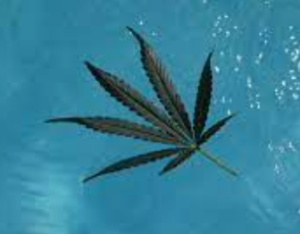
Taiwan and China share at least one thing
The Titanic continues to be in the news and in the public mind. When the largest unsinkable ship left England it was filled with the celebrities of the time including Astors, a Guggenheim, a Countess, art, fabulous jewels, luxury cars and not enough lifeboats. After being hit by an iceberg, the liner slid into the depths of the very cold Atlantic. In 1985 the ship was found and some questions were asked about the ship, including the then surprising news that the ship had broken in two.
Looking back, the question arises as to whether passengers and crew used marijuana. It would have definitely helped in the last few hours. The answer is most likely. Here’s why.
During the Edwardian era, cannabis was legal and just another tool in the medical and recreational tool kit. It was commonly known as cannabis, Indian hemp, or ganja. For the most exotic and potent use, it has been named hashish. Hashish was popular with celebrities such as Victor Hugo, Alexandre Dumas, Charles Baudelaire and Honoré de Balzac.
Ottoman Sultan Abdülaziz brought marijuana and pipe products to the 1872 World’s Fair to showcase Ottoman culture. This made hookahs and Turkish hashish a popular fad in the US until it was banned in the 1920s.
RELATED: TSA and Cannabis: What You Need to Know
During Titanic’s construction, cocaine products could be bought for toothaches, and opium (laudanum) was packaged in cans for infants and adults for pain relief and other ailments. Coca Cola, the new popular American drink sweeping the nation, featured tiny traces of cocaine. Europe was just on the way to lemonade and had the first bottling plants as early as 1919.

One of the most popular uses of cannabis in the Edwardian era was soaking the feet against corns. However, it has also been sold as a remedy for consumption, bronchitis, asthma, veterinary indigestion and a simple cough. Queen Victoria, whose name suggests a more conservative era, used cannabis on her doctor’s orders to help with menstrual cramps, among other things. Empress Elisabeth of Australia-Hungrig, considered one of the most beautiful women in Europe, used it against her persistent cough. Although not a fan of medicine in general, she was more accepting of natural remedies.
Cannabis users saw themselves as more “cosmopolitan”. Some men believed cannabis to be a female aphrodisiac. The first-class passengers were definitely a more cosmopolitan crowd, gathering art, business, and royalty-in-law in search of the next big thing.
RELATED: Understanding the Importance of Marijuana Studies and Findings
Given the cultured and wealthy crowds in first class and disposable income second class, it’s almost certain that the passengers carried cannabis with them to help them make the seven-day crossing. Seasickness sickness was a major reason for the wealthy to bring some Indian hemp with them.
In the final hour it would have been a real advantage to go into the final with a more relaxed atmosphere.

Post a comment: